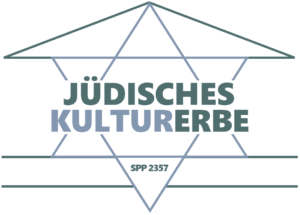With the establishment of the Wissenschaft des Judentums (science of Judaism) in the 19th century, academic research on and documentation of Jewish heritage emerged. In particular, the upswing of the jüdische Volkskunde (Jewish Folklore Studies) at the turn of the 20th century led to the increasing inclusion of Jewish cultural objects in academic research. In this context Jewish tradition and culture were considered beyond their textual foundations.
The simultaneous emergence of music collections of Jewish cantors (e.g. Eduard Birnbaum Music Collection, and the Hebrew-Oriental Melody Collection (1914-1932)) illustrates that ‘Jewish collecting’ not only followed certain academic, Zionist, and national interests. The motives for collecting were also rooted in two ethical pillars of Judaism: the halakha (religious law) and tzedaka (charity). These intentions were fundamentally different from those underlying the majority of Jewish collections today. Yet, historical-scientific and present-political interests intertwined in constructing Jewish heritage even before the Shoah.
Regarding this priority program, the driving forces and different manifestations of collecting and preserving as sine qua non of the construction of Jewish heritage are to be traced: its primary forms, its secularization upon entry into modernity, its different conceptions in Central and Eastern Europe, and its radical reorientation after the Shoah.
After World War II, a new process of rediscovery and preservation of the Jewish cultural heritage in Germany and other European countries began. Against the backdrop of coming to terms with the past and a hesitant establishment of a specific culture of remembrance, this process aimed, among other things, to build a foundation for renewing Jewish life in the present ‘new Europe.’ The measures of preserving Jewish cultural heritage are often bound to certain expectations. These can be combating antisemitism, promoting cultural diversity and intercultural dialogue, or preserving specific as European ascribed values, such as democracy and tolerance.
The meanings and motives of heritage and preservation also differ. In Western Europe, the remembrance of Jewish cultural heritage and the commemoration of the Shoah became the cornerstone of a ‘European memory.’ Jewish cultural heritage here tends to be perceived as positive, homogeneous, and transnational; the aspect of cultural reparation is predominant. Due to the later beginning confrontation with the Shoah and the destroyed Jewish life-worlds in post-Soviet Eastern Europe, Jewish cultural heritage tends to be perceived there as national, diverse, and dissonant. Therefore, it is more a matter of filling the gaps created by communist ideology as of demonstrating democratic principles and multicultural ideals.
